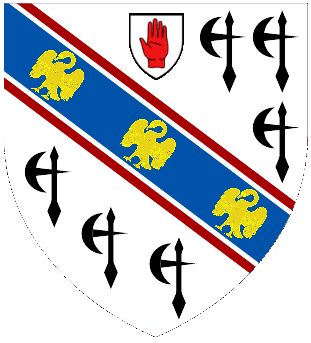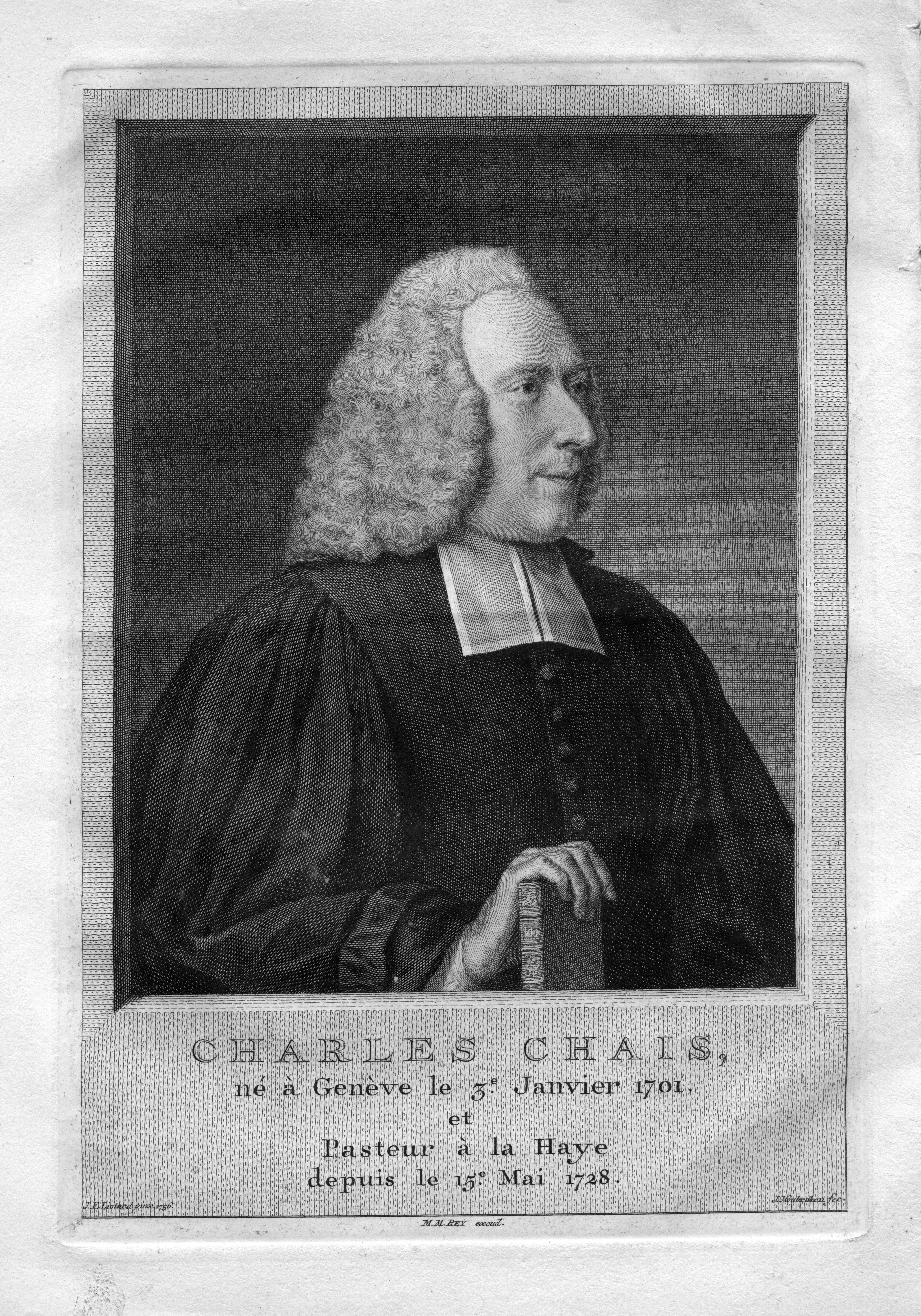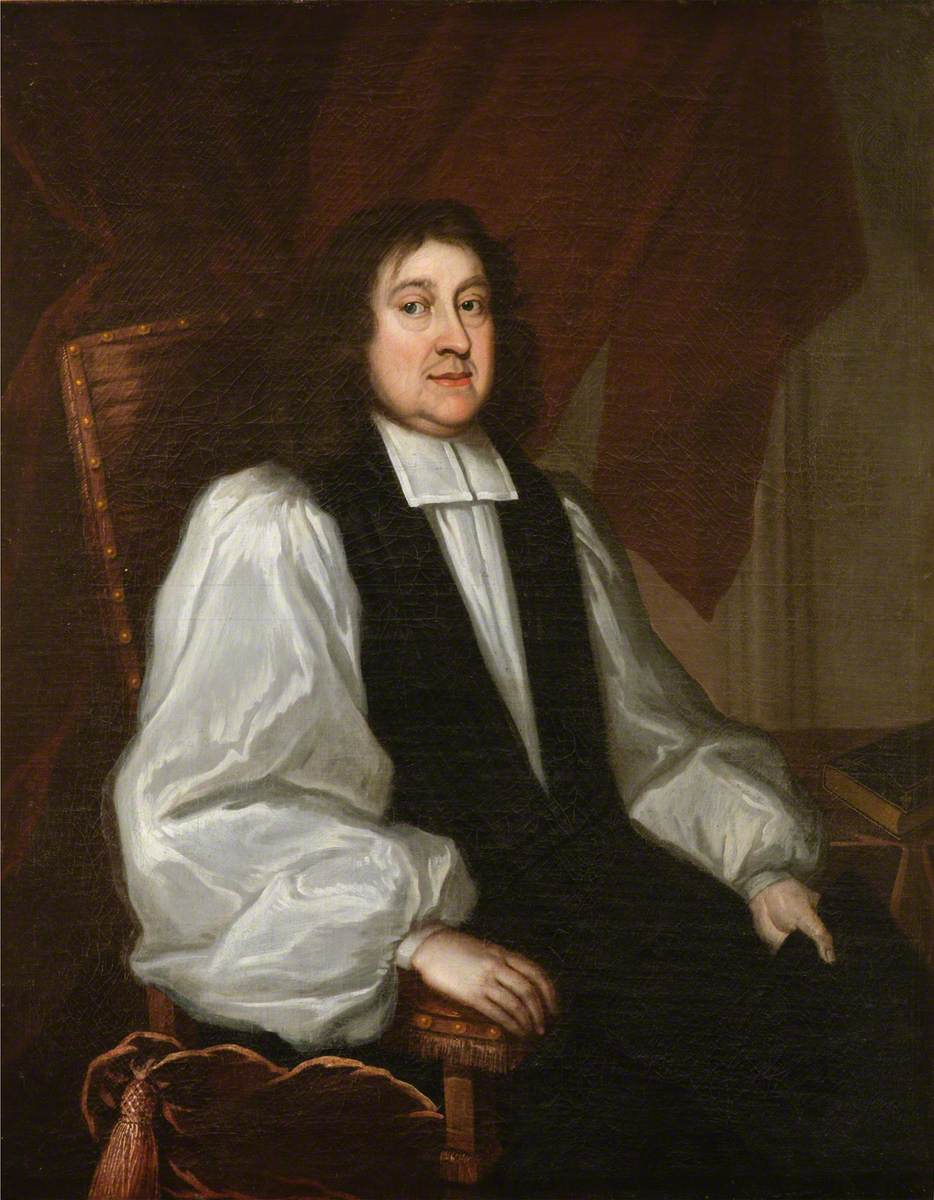|
Thomas Stackhouse
Thomas Stackhouse (1677–1752) was an English theologian and controversialist. Life The son of John Stackhouse (d. 1734), who became rector of Boldon in County Durham, and uncle of John Stackhouse, he was born at Witton-le-Wear where his father was then curate. On 3 April 1694 he entered at St. John's College, Cambridge and was B.A. when ordained in 1704. From 1701 to 1704 Stackhouse was headmaster of Hexham Grammar School, and on 28 December 1704 he was ordained priest in London. He then became curate of Shepperton in Middlesex, and from 1713 was minister of the English church at Amsterdam. In 1731 he was curate of Finchley. For some time Stackhouse lived in poverty. He was rescued by his appointment in the summer of 1733 to the vicarage of Beenham, Berkshire. In 1737 he had a house in Theobald's Court, London; in 1741 he was living at Chelsea. Stackhouse died at Beenham on 11 October 1752, and was buried in the parish church, with a large interior monument. Works The m ... [...More Info...] [...Related Items...] OR: [Wikipedia] [Google] [Baidu] |
English People
The English people are an ethnic group and nation native to England, who speak the English language in England, English language, a West Germanic languages, West Germanic language, and share a common history and culture. The English identity is of History of Anglo-Saxon England, Anglo-Saxon origin, when they were known in Old English as the ('race or tribe of the Angles'). Their ethnonym is derived from the Angles, one of the Germanic peoples who migrated to Great Britain around the 5th century AD. The English largely descend from two main historical population groups the West Germanic tribes (the Angles, Saxons, Jutes and Frisians) who settled in southern Britain following the withdrawal of the Ancient Rome, Romans, and the Romano-British culture, partially Romanised Celtic Britons already living there.Martiniano, R., Caffell, A., Holst, M. et al. Genomic signals of migration and continuity in Britain before the Anglo-Saxons. Nat Commun 7, 10326 (2016). https://doi.org/10 ... [...More Info...] [...Related Items...] OR: [Wikipedia] [Google] [Baidu] |
John Wilford
John Wilford ( fl. 1723–1742) was an English bookseller. Life He was actively engaged in his profession in 1723 when he began issuing a monthly circular of new books. Shortly after 1730, when fortunes were being made in the trade by books issued in weekly parts, Wilford, whose place of business was in the Old Bailey, entered the ranks of publishers, but obtained no more than a precarious footing. In 1741 Wilford was living at the Three Luces in Little Britain, the stronghold of the bookselling trade. After 1742 he drops out of notice. Works From March 1723 to December 1729 Wilford issued in monthly parts, at threepence each, a price-list called ''A Monthly Catalogue or General Register of Books, Sermons, Plays, and Pamphlets, printed or reprinted either at London or the two Universities''. Appended to most of the numbers are proposals for printing various works by subscription. During 1731–2 he employed Thomas Stackhouse on the ''Works'' of archbishop Sir William Dawes, with ... [...More Info...] [...Related Items...] OR: [Wikipedia] [Google] [Baidu] |
1677 Births
Events January–March * January 1 – Jean Racine Jean-Baptiste Racine ( , ) (; 22 December 163921 April 1699) was a French dramatist, one of the three great playwrights of 17th-century France, along with Molière and Corneille as well as an important literary figure in the Western traditio ...'s tragedy ''Phèdre'' is first performed, in Paris. * January 21 – The first medical publication in America (a pamphlet on smallpox) is produced in Boston. * February 15 – Four members of the English House of Lords embarrass King Charles II at the opening of the latest session of the "Cavalier Parliament" by proclaiming that the session is not legitimate because it hadn't met in more than a year. The George Villiers, 2nd Duke of Buckingham, Duke of Buckingham, backed by Anthony Ashley Cooper, 1st Earl of Shaftesbury, Lord Shaftesbury, James Cecil, 3rd Earl of Salisbury, Lord Salisbury and Philip Wharton, 4th Baron Wharton, Baron Wharton, makes an unsuc ... [...More Info...] [...Related Items...] OR: [Wikipedia] [Google] [Baidu] |
Sir William Dawes, 3rd Baronet
Sir William Dawes, 3rd Baronet (12 September 1671 – 30 April 1724), was an Anglican prelate. He served as Bishop of Chester from 1708 to 1714 and then as Archbishop of York from 1714 to 1724. Politically he was a Hanoverian Tory, who favoured the Hanoverian Succession. Education Dawes was born at Lyons, near Braintree in Essex and from the age of nine attended Merchant Taylors' School in London. Already excelling in Hebrew by the age of 15, he was barely 18 when he wrote his work in verse: ''The Anatomy of Atheisme'', and his eminent ''The Duties of the Closet'' in prose. In 1687, William matriculated at St John's College, Oxford, of which college he also became a fellow, then migrated to St Catharine's Hall, Cambridge in 1689. He graduated Master of Arts (MA Cantab) from St Catharine's in 1695, on royal decree ('' per lit. reg.'') due to his young age; in 1696 he graduated in theology of Doctor of Divinity (DD). Anglican priest William Dawes became the permanent pastor o ... [...More Info...] [...Related Items...] OR: [Wikipedia] [Google] [Baidu] |
Angers
Angers (, , ) is a city in western France, about southwest of Paris. It is the prefecture of the Maine-et-Loire department and was the capital of the province of Anjou until the French Revolution. The inhabitants of both the city and the province are called ''Angevins'' or, more rarely, ''Angeriens''. Angers proper covers and has a population of 154,508 inhabitants, while around 432,900 live in its metropolitan area (''aire d'attraction''). The Angers Loire Métropole is made up of 29 communes covering with 299,500 inhabitants (2018).Comparateur de territoire INSEE Not including the broader metropolitan area, Angers is the third most populous |
Jean Frain Du Tremblay
Jean may refer to: People * Jean (female given name) * Jean (male given name) * Jean (surname) Fictional characters * Jean Grey, a Marvel Comics character * Jean Valjean, fictional character in novel ''Les Misérables'' and its adaptations * Jean Pierre Polnareff, a fictional character from ''JoJo's Bizarre Adventure'' Places * Jean, Nevada, USA; a town * Jean, Oregon, USA Entertainment * Jean (dog), a female collie in silent films * "Jean" (song) (1969), by Rod McKuen, also recorded by Oliver * ''Jean Seberg'' (musical), a 1983 musical by Marvin Hamlisch Other uses * JEAN (programming language) * USS ''Jean'' (ID-1308), American cargo ship c. 1918 * Sternwheeler Jean, a 1938 paddleboat of the Willamette River See also *Jehan * * Gene (other) * Jeanne (other) * Jehanne (other) * Jeans (other) * John (other) John is a common English name and surname: * John (given name) * John (surname) John may also refer to: New Testa ... [...More Info...] [...Related Items...] OR: [Wikipedia] [Google] [Baidu] |
Richard Fiddes
Richard Fiddes (1671–1725) was an English Anglican priest and historian. Life He was born at Hunmanby and educated at Oxford University. He took orders, and obtained the living of Halsham in Holderness in 1696. Owing to ill-health he applied for leave to reside at Wickham near Scarborough, North Yorkshire, and in 1712 he removed to London on the plea of poverty, intending to pursue a literary career. In London he met Jonathan Swift, who procured him a chaplaincy at Hull. He also became chaplain to the earl of Oxford. After losing the Hull chaplaincy through a change of ministry in 1714, he devoted himself to writing. His best book is a ''Life of Cardinal Wolsey'' (London, 1724), containing documents which are still valuable for reference; of his other writings the ''Prefatory Epistle'' containing some remarks to be published on Homer's ''Iliad'' (London, 1714), was occasioned by Alexander Pope's proposed translation of the ''Iliad'', and his ''Theologia speculativa'' (London, ... [...More Info...] [...Related Items...] OR: [Wikipedia] [Google] [Baidu] |
Liberato Fassoni
San Liberato or San Liberale (died 269) was a Christian martyr from Italy whose annual feast day is the 20 December. Saint Liberato was buried in the Septem Palumbas cemetery on the Salaria Vecchia road, and his hagiography states that he was from a consular noble family but decided not to follow a political career. He was arrested and sentenced to death in Rome under Claudius Gothicus Marcus Aurelius Claudius "Gothicus" (10 May 214 – January/April 270), also known as Claudius II, was Roman emperor from 268 to 270. During his reign he fought successfully against the Alemanni and decisively defeated the Goths at the Battle ..., and some believe, according to tradition, that his body lies under the basilica dedicated to the martyr John. [...More Info...] [...Related Items...] OR: [Wikipedia] [Google] [Baidu] |
Charles-Pierre Chais
Charles-Pierre Chais (1701–1785) was a Genevan pastor, who spent much of his life in The Hague. He completed a Bible translation in French; however, it derived with commentary from English-language sources. Life Chais was born in Geneva in January 1701. He was the son of Jean-François Chais and Alexandrine Maurice. He studied theology in Geneva, and then travelled in France, Germany, and Holland from 1724, when he was ordained, to 1728. Chais was pastor of the Walloon Church at The Hague from 1728 and for the rest of his life. He also acted as a diplomat. With François Fagel (1659–1746), he saw that Geneva was included in the Treaty of Vienna (1738), at the end of the War of the Polish Succession. Again, in the War of the Austrian Succession, he had the help of Fagel in heading off a Spanish army, that was threatening Geneva in September 1742. His portrait in pastel was taken by Jean-Étienne Liotard. Chais was a member of the Holland Society of Sciences from 1753. He di ... [...More Info...] [...Related Items...] OR: [Wikipedia] [Google] [Baidu] |
Gilbert Burnet
Gilbert Burnet (18 September 1643 – 17 March 1715) was a Scottish philosopher and historian, and Bishop of Salisbury. He was fluent in Dutch, French, Latin, Greek, and Hebrew. Burnet was highly respected as a cleric, a preacher, an academic, a writer and a historian. He was always closely associated with the Whig party, and was one of the few close friends in whom King William III confided. Early life: 1643–1674 Burnet was born at Edinburgh, Scotland, in 1643, the son of Robert Burnet, Lord Crimond, a Royalist and Episcopalian lawyer, who became a judge of the Court of Session, and of his second wife Rachel Johnston, daughter of James Johnston, and sister of Archibald Johnston of Warristoun, a leader of the Covenanters. His father was his first tutor until he began his studies at the University of Aberdeen, where he earned a Master of Arts in Philosophy at the age of thirteen. He studied law briefly before changing to theology. He did not enter into the ministry at that ... [...More Info...] [...Related Items...] OR: [Wikipedia] [Google] [Baidu] |
William Pulteney, 1st Earl Of Bath
William Pulteney, 1st Earl of Bath, (22 March 16847 July 1764) was a British Whig politician who sat in the House of Commons from 1707 to 1742, when he was created the first Earl of Bath by King George II. Bath is sometimes stated to have been First Lord of the Treasury and British prime minister, for the shortest term ever (two days) in 1746, although most modern sources do not consider him to have held the office. Background and early career The son of William Pulteney by his first wife, Mary Floyd, he was born in March 1684 into an old Leicestershire family. He was educated at Westminster School and at Christ Church, Oxford, matriculating on 31 October 1700. He acquired extensive classical knowledge, and on leaving Oxford made the usual tour on the continent. In 1705, he was brought into parliament by Henry Guy (former secretary of the Treasury) for the Yorkshire borough of Hedon. This seat was held by him without a break until 1734. Throughout the reign of Queen Anne ... [...More Info...] [...Related Items...] OR: [Wikipedia] [Google] [Baidu] |
John Robinson (bishop Of London)
John Robinson (7 November 1650 – 11 April 1723) was an English diplomat and prelate. Early life Robinson was born at Cleasby, North Yorkshire, near Darlington, a son of John Robinson (died 1651) a cooper by trade and Elizabeth Potter. Educated at Brasenose College, Oxford, he became a fellow of Oriel College, and in about 1680 he became chaplain to the British embassy to Stockholm. He remained in Sweden for nearly thirty years. During the absence of the minister, Philip Warwick, Robinson acted as resident and as envoy extraordinary, and he was thus in Sweden during a very interesting and important period, and was performing diplomatic duties at a time when the affairs of northern Europe were attracting an unusual amount of attention. Among his adventures not the least noteworthy was his journey to Narva with Charles XII in 1700. Career In 1709 Robinson returned to England, and was appointed Dean of Windsor and of Wolverhampton; in 1710 he was elected bishop of Bristol, and a ... [...More Info...] [...Related Items...] OR: [Wikipedia] [Google] [Baidu] |






